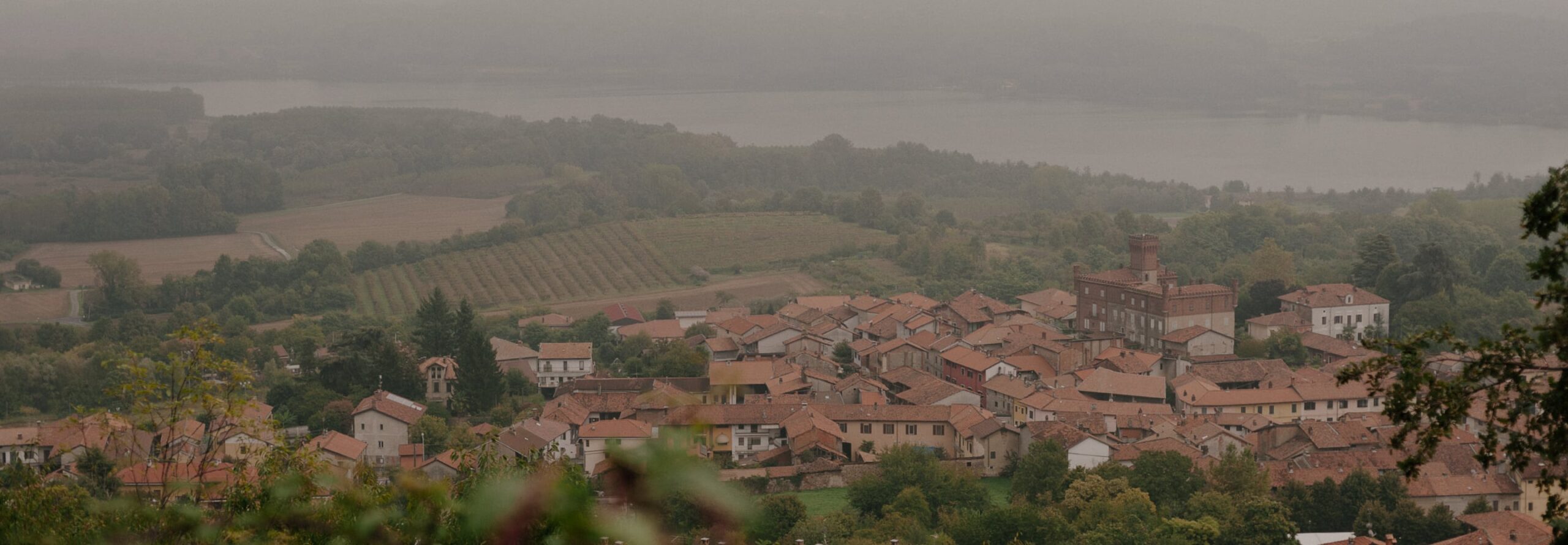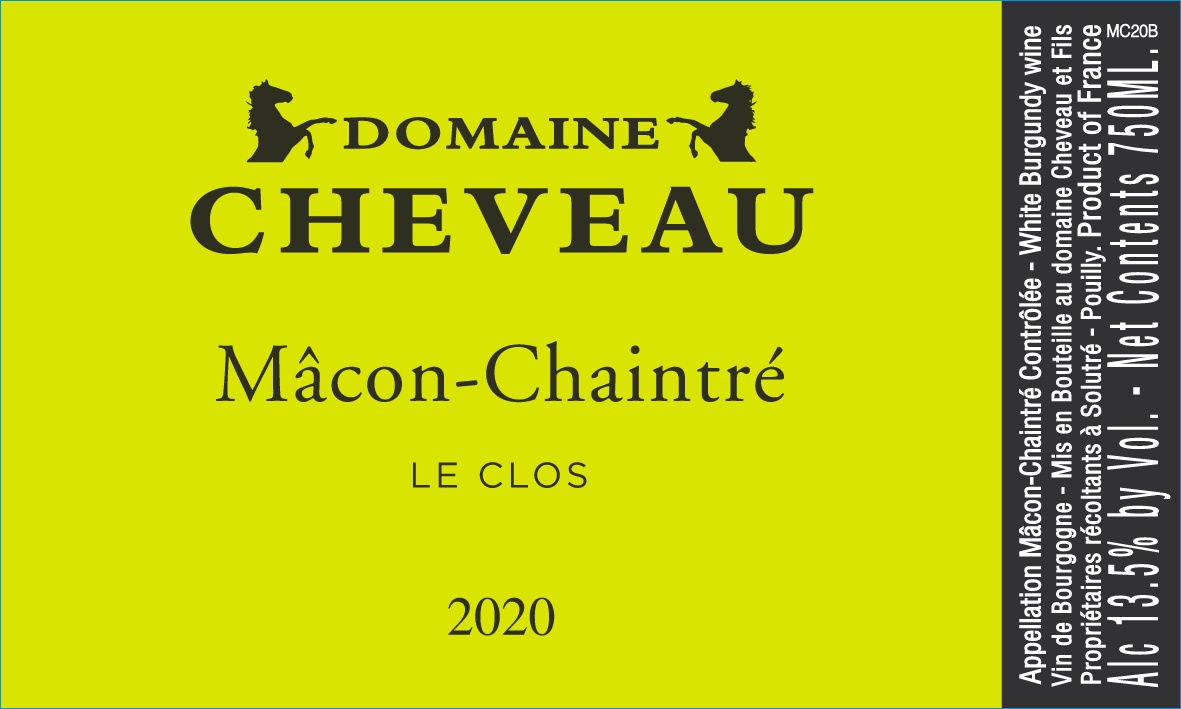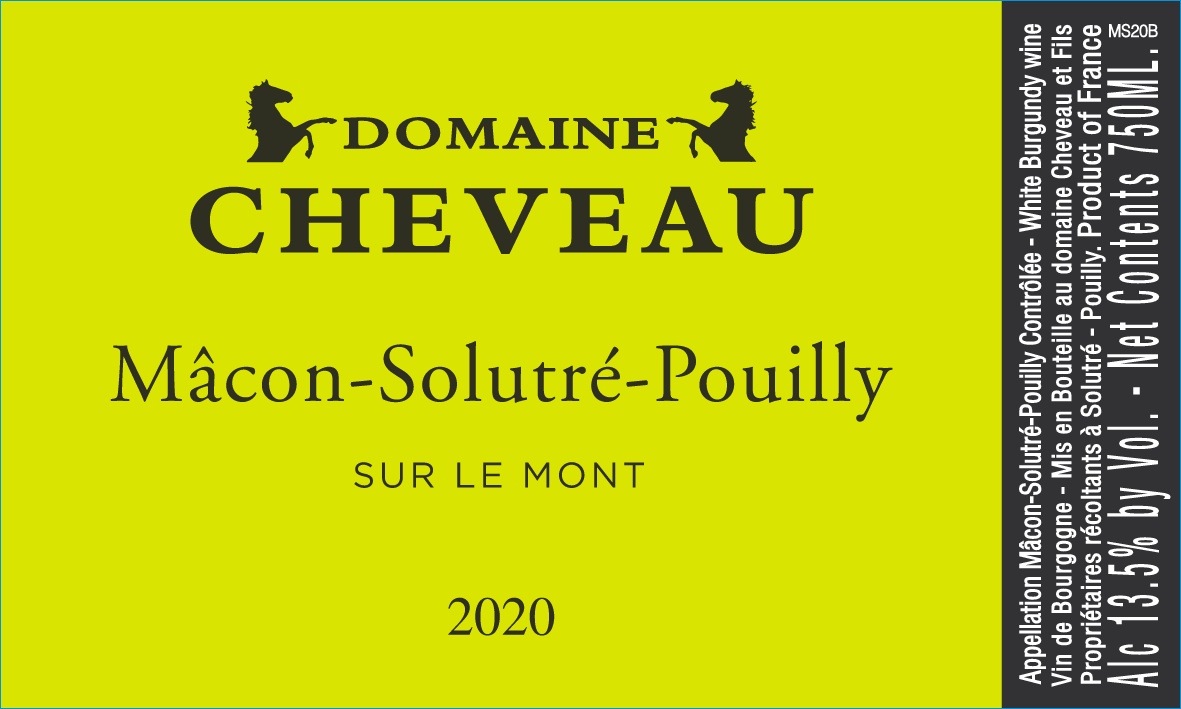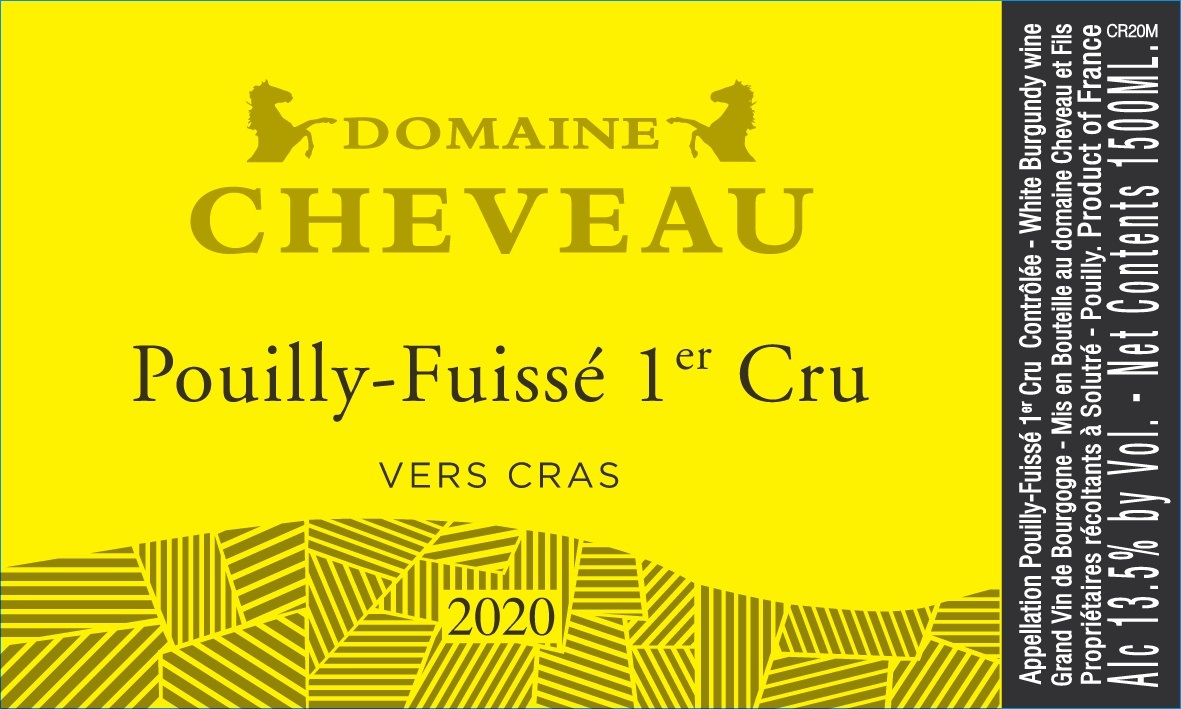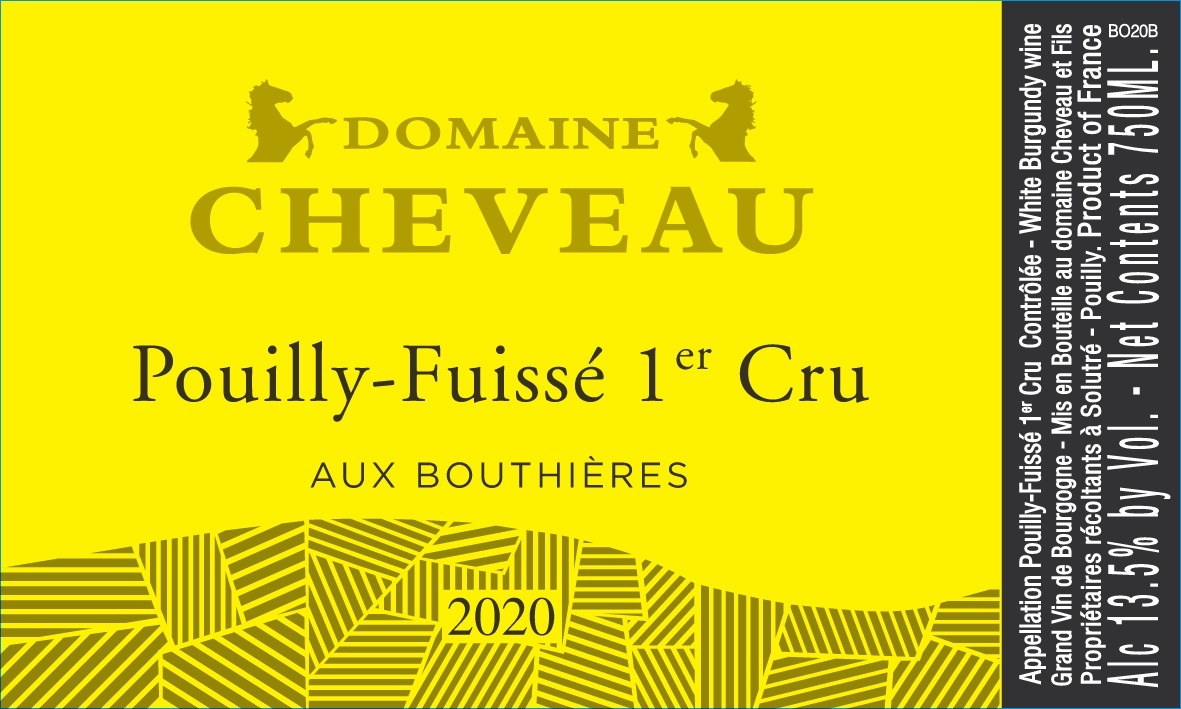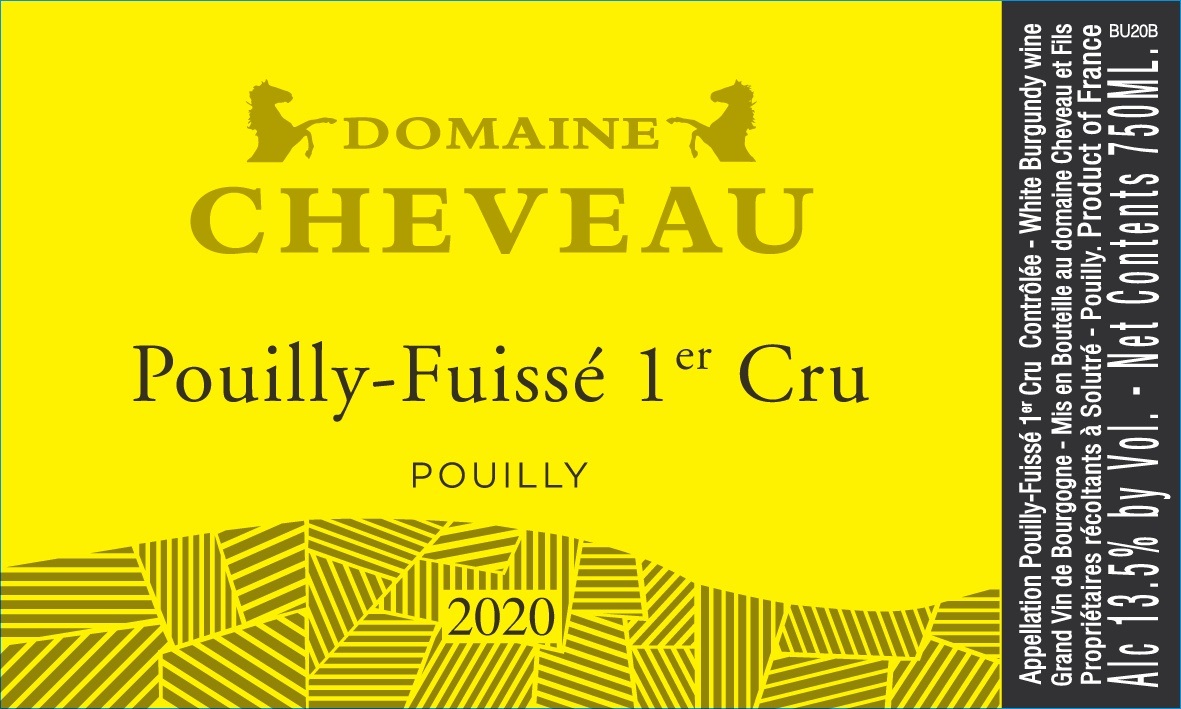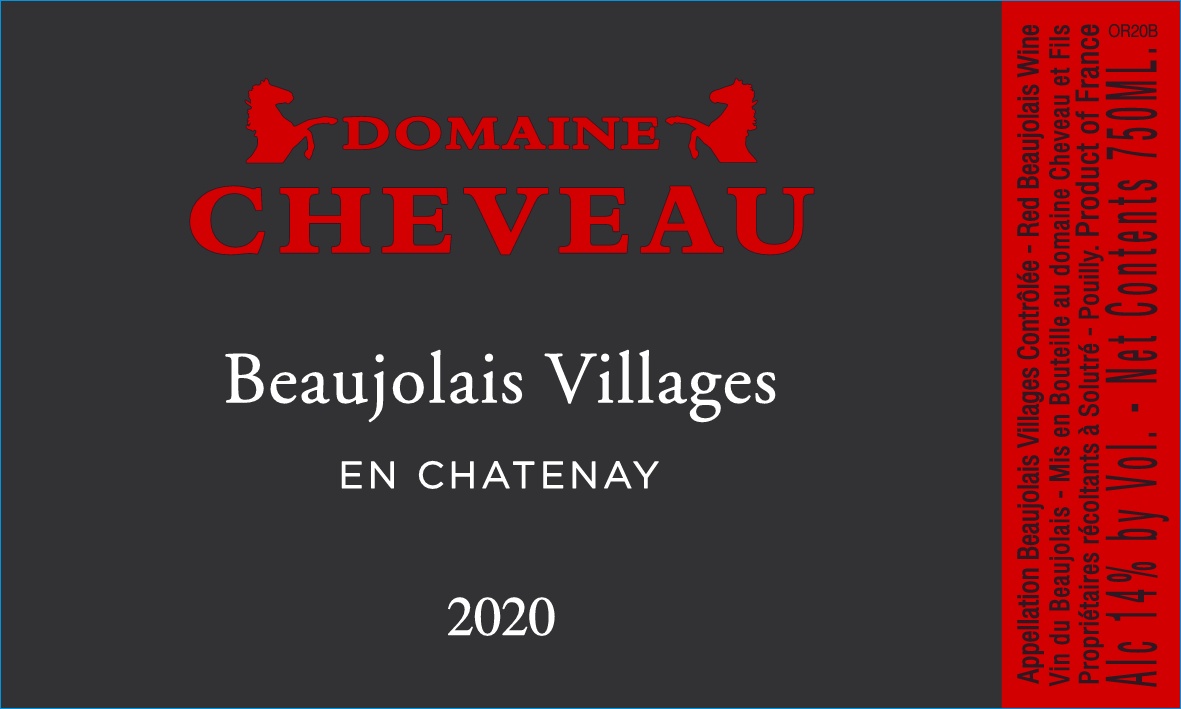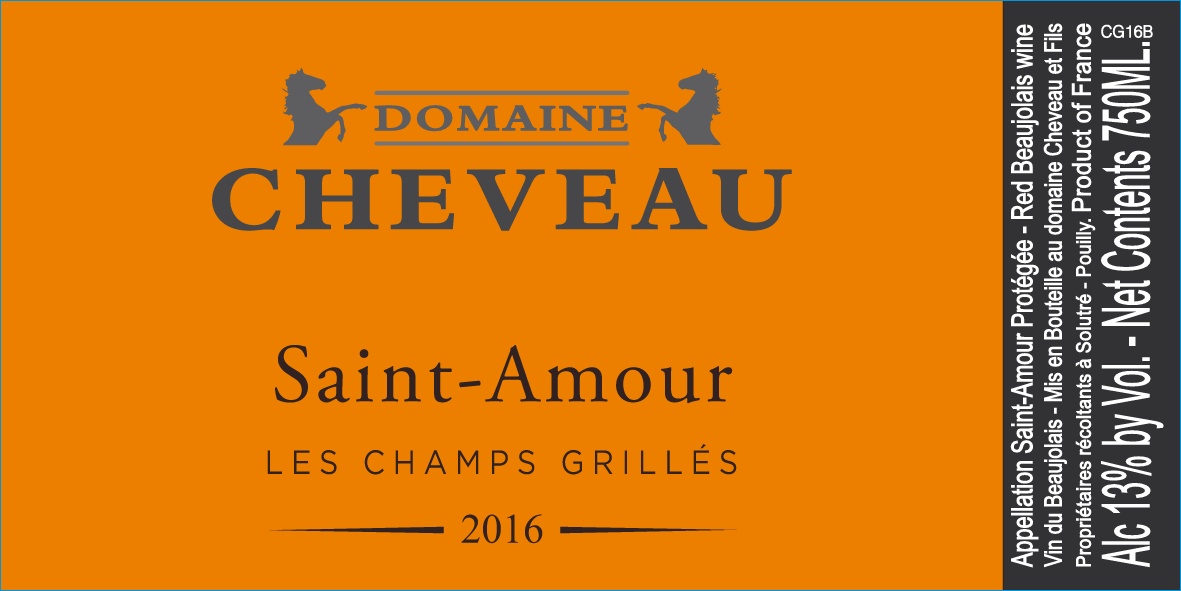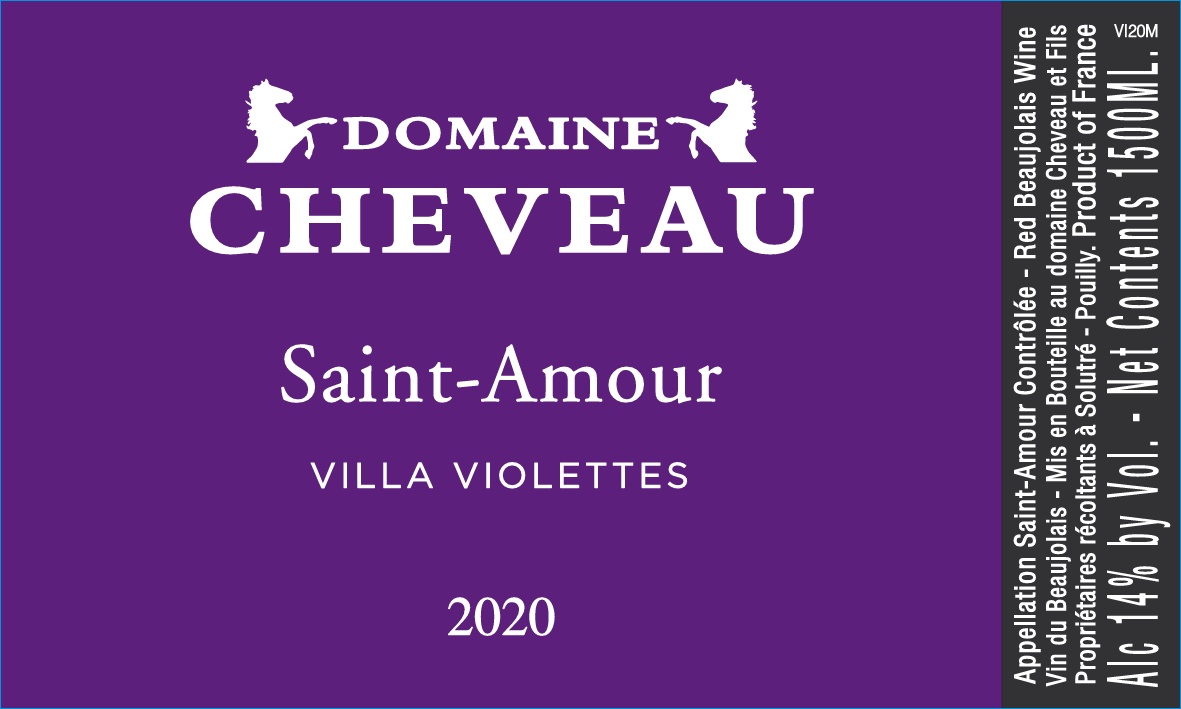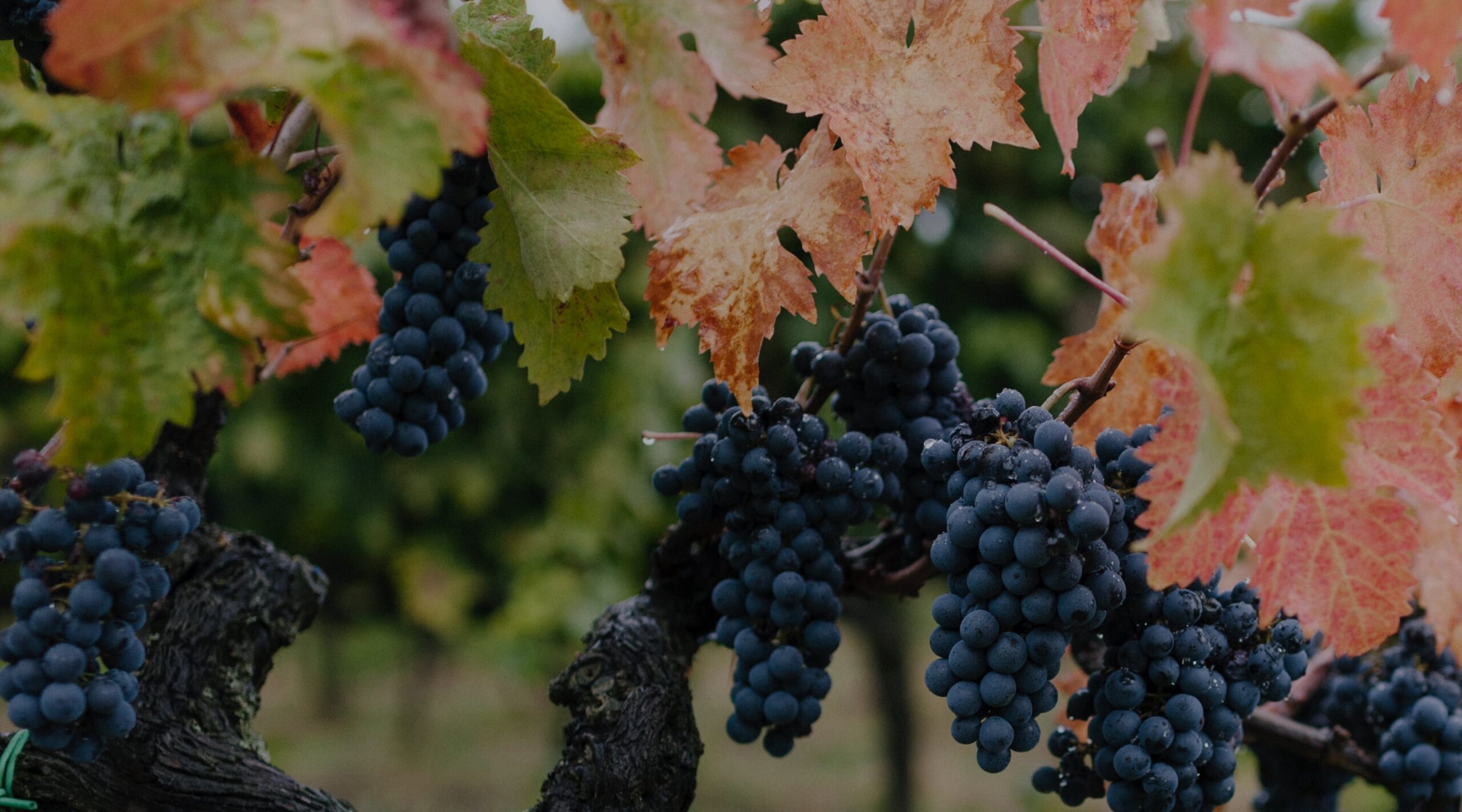
Domaine Cheveau
Wines
Solutré-Pouilly
Beaujolais Blanc, “Les Pouliches”
“Les Pouliches” (French for “the fillies”) is a reference to the youthful age of these vines—the newest plantings of the domaine, from 2013, in the communes of Leynes and Chânes. Aged for 11 months in stainless steel, this is rounder and richer than the Bourgogne Blanc, but still possesses the riveting focus and sense of just-so equilibrium that characterize all of the domaine’s white wines.
Mâcon-Chaintré, “Le Clos”
This single-vineyard site is in the southernmost village (Chaintré) in the Maconnais. The vines are young (of an average age of 15 years). After a manual harvest, the grapes are pressed pneumatically and a long, slow, temperature-controlled fermentation occurs in the underground cellars of the domaine. Chapitalisation is avoided except when absolutely necessary. The wine is aged in stainless steel on the fine lees for eight months before undergoing a light filtration at the moment of bottling. The Macon-Chaintré “Le Clos” is consistently marked by notes of citrus fruits (lemon, orange, grapefruit) with a lively acidity, fruit blossom aromas and excellent balance. We purchase three hundred cases per year of this cuvée.
Mâcon-Davayé, “Les Belouzes”
Made from a 1-hectare parcel in Davayé, right on the border with Pouilly. Fermented and aged in stainless steel tanks and left to age on the fine lees for 8 months. Planted in 2011, the vines are quite young, which is evident by this wine’s lively and relaxed personality. Still, there is a profound mineral streak in this wine that should only grow more profound as these vines age over the next decades. We receive a mere 100 cases of this cuvee each year.
Mâcon-Fuissé, “Les Grands Bruyères”
Approximately 6,000 bottles are produced annually from 40 year-old vines in the village of Fuissé. Planted to limestone-clay soils, these vineyards produce a typically generous, rich wine from this village famed for its ideal setting that yields some of the finest wines of the Maconnais. In this instance, after fermentation, the wine is raised in stainless steel but left in contact with the fine lees for one year. Virtually the entire production of this wine is dedicated to the US market.
Mâcon-Solutré-Pouilly, “Sur le Mont”
The third in a group of three single-vineyard village-designated wines of Macon, this offering is the most elegant and complex of the trio. From vineyards in the Cheveau’s home village of Solutré-Pouilly, the vines are still young at 15 to 20 years of age. A vibrant, precise wine with excellent minerality and length, the élevage is done in stainless steel with lees contact for eight months prior to bottling. Approximately 300 cases are imported for sale in the USA.
Saint-Véran, “Chantevigne”
Again, from younger vines of 15 to 20 years of age, this wine is sourced from vineyards in the village of Davayé, part of the Saint Veran appellation. A very limited production wine (approximately 100 cases are available annually for the US market) that is fermented and then aged in stainless steel for eight or so months before being bottled. A fine, dry, restrained wine of finesse with excellent length and clear expression of terroir.
Pouilly-Fuissé, “Aux Combes”
Pouilly-Fuissé “Aux Combes” formerly constituted half of the “Trois Terroirs” cuveé, which is no longer in production beginning with the 2020 vintage. The vineyard borders “Vers Cras” (newly upgraded to Premier Cru) in the commune of Solutré-Pouilly—with an exposition that consistently fares very well in today's warm summers. Nicolas employed a single 40-hectoliter foudre (2013 origin) in the raising of this 2020 “Aux Combes,” and the wine shows all the clarity and mineral precision we've come to expect and cherish in this domaine's wines.
Pouilly-Fuissé, “Les Vignes du Hameau”
From an assembly of old-vine parcels planted in the heart of the hamlet of Pouilly, dating back to the establishment of the domaine by André Cheveau in 1950. The soils are loamy brown clay and limestone with quartz and flint stones. Grapes are harvested by hand and vinified with indigenous yeasts, then raised for 14 months on the lees in 600-liter demi-muids. Nicely rich and dense on the palate with ripe citrus and stone fruits, the wine finishes with a refreshing cut of chalky minerality.
Pouilly-Fuissé, “Les Vieilles Vignes”
Sourced from two vineyards in the hamlet of Pouilly: “Chailloux” and “Vers Cras”, the vines for this cuvée are fifty to seventy years old. A powerful wine of great depth and length, this old vines offering is barrel-fermented and barrel-aged with about 25% of the oak being new. About 12,00 bottles of this elite cuvée of Fuissé from the Cheveau family are distributed in the USA (a limited number of magnums are also available).
Pouilly-Fuissé, “Au Buchot”
Cheveau works this small parcel of 40-year-old vines, located in the commune Solutré-Pouilly. Considered to be among the top climats in Pouilly-Fuissé, “Au Buchot” is situation on a steep rocky slope composed of brown limestone. After being hand harvested and fermented using natural yeasts, this wine is aged for 20 months in 600-L barrels (20% new) before being bottled. In limited production; only 25 cases (1 barrel) are imported into the U.S. each year.
Pouilly-Fuissé 1er Cru, “Vers Cras”
The “Vers Cras” vineyard is located in the hamlet of Pouilly in the heart of the Pouilly-Fuissé appellation. The soil is fine, white limestone with excellent drainage. The average age of the vines is 65 years. After a manual harvest, the grapes are gently pressed and then racked into tonneaux for both the alcoholic and malolactic fermentations. The wine is then aged for an additional year on the fine lees in small barrels before bottling. This cuvée is notable for its clear expression of the chalk of its soil combined with a powerful presence on the palate. Approximately 100 cases are imported for sale in the USA.
Pouilly-Fuissé 1er Cru, “Les Ménétrières”
The Cheveau family considers this site to be the most prestigious of their holdings. Sited in Pouilly, the vineyards here average thirty years of age. This wine is aged in barrel (about one-third new oak) and undergoes some batonnage. The result is a powerful yet elegant wine of great breed. We import six hundred bottles annually for the US market.
Pouilly-Fuissé 1er Cru, “Aux Bouthières”
Cheveau owns a parcel of 30-year-old Chardonnay in the vineyard “Aux Bouthières”—upgraded to premier cru status in the historic 2020 reclassification. Situated in the commune of Solutré-Pouilly very close to premier cru “Pouilly,” Bouthières contains richer soil with a higher clay content than some of its neighbors, thus producing a wine built more around breadth and power than minerality. Still, its underlying limestone core shines through strongly. This cuvée spends 12 months in 600-liter barrels on its fine lees followed by an additional 12 months in stainless steel.
Pouilly-Fuissé 1er Cru, “Pouilly”
“Pouilly” is considered *the* great premier cru of Pouilly-Fuissé, the appellation having gained approval for premier cru status of 22 vineyards starting in 2020, and Cheveau owns vines in three of its climats: “Au Buchot” (which they no longer bottle separately), “Morlay”, and “Le Clos”, the oldest of which were planted in 1946. As with all of their wines, the grapes are manually harvested and fermented with native yeast, and the wine is raised on the lees for one year in 600-liter barrels followed by a year in stainless steel tanks. “Pouilly” is the consummate Pouilly: rich but fresh, powerful and vibrant with persistent minerality.
Beaujolais-Villages, “En Chatenay”
The vines of the vineyard “En Chatenay” are an average age of fifty years planted in soils composed of sand and schist 200 meters outside of Saint-Amour. At harvest the grapes undergo a brief cold maceration before pressing and fermentation. The cuvaison is about 12 days in length; both pigeage and remontage are practiced, the extent of which, however, is determined by the particular conditions of the vintage. After fermentation, the wine is aged in stainless steel tanks for 8 or so months before bottling. This wine is deeply colored, concentrated and firm with savory notes of ripe cherries (red and black). Only 150 cases of this lovely red are imported for the US market.
Saint-Amour, “Les Champs Grillés”
The “Champs Grillés” lieu-dit is situated in the heart of the Saint-Amour appellation on soil composed of sand and schist. The average age of the vines are 75 years with some as old as 90 years. The grapes are hand-harvested, subject to multiple “tries” (both in the field and on a sorting table); then, the grapes are destemmed, a brief cold maceration is done to extract color and aroma, followed by a 12-day cuvaison with regular pigeage and remontage. The wine is aged in stainless steel and bottled within a year of the harvest. Approximately 250 cases per annum are available for the US market.
Saint-Amour, “Villa Violettes”
This cuvée is an assemblage of five parcels (average 60 years old) that Domaine Cheveau recently acquired from their uncle. The grapes are hand-harvested and sorted before being destemmed. After a cold maceration of three to four days and a two-week cuviason, the wine spends eight months in stainless steel before bottling. The “Villa Violettes” is comparable to the “Champs Grillés” with deep color and structure, explosive fresh fruit, and firm tannins; yet it does present a bit fresher and more youthful on the palate. Approximately 125 cases per annum are available for the US market.
